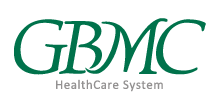Trial of Laparoscopic Compared to Open Inguinal Hernia Repair in Children Younger Than 3 Years
| Status: | Completed |
|---|---|
| Conditions: | Gastrointestinal |
| Therapuetic Areas: | Gastroenterology |
| Healthy: | No |
| Age Range: | Any - 3 |
| Updated: | 8/10/2018 |
| Start Date: | October 2007 |
| End Date: | December 2014 |
Randomized Controlled Trial of Laparoscopic Compared to Open Inguinal Hernia Repair in Children Younger Than 3 Years of Age
Laparoscopic techniques have been applied widely to the management of various common
pediatric surgical diseases. Current evidence lacks sufficient quality to justify the
widespread adoption of the laparoscopic approach to the repair of inguinal hernias within
children. It is important to critically evaluate the efficiency and the potential risks of
these new techniques before they can supplant open techniques as the treatment modality of
choice. Numerous large case series of laparoscopic inguinal hernia repair have been reported
with average length of stay, complication rates, recurrence rates and pain management scores
that mirror those of open inguinal hernia repair. Only one randomized controlled trial has
been performed to compare the open versus laparoscopic technique which has not provided
answers regarding the potential benefits on young infants. Benefits of an open approach in
children includes a shorter operative time, while the laparoscopic procedure is associated
with less pain and a better cosmetic result.
This study will compare open versus laparoscopic repairs of inguinal hernias. The primary
outcome variable will be total dose of acetaminophen administered postoperatively for pain
management. Secondary outcome variables include 1) Incidence of intraoperative complications
such as compromise of testicular vessels, perforation of abdominal viscera; 2) Short-term
outcomes such as operative time, rate of conversion from open to laparoscopic procedure,
requirement for reoperation within 30 days, wound infection, acute hydroceles and
post-operative length of stay; 3) Long-term outcomes such as recurrent inguinal hernia,
testicular atrophy and; 4) Cost of hospitalization will be compared between the open and
laparoscopic groups.
Comparisons will be made in two groups of patients- patients with 1) unilateral hernias and
2) bilateral hernias and will last for 2 years. 102 patients in the unilateral arm and 50
patients in the bilateral arm will be randomized to each treatment group and each subject
will be followed for up to 12 months following the surgical intervention. Two study
evaluations by telephone (in addition to a single outpatient clinic visit already required as
part of standard post-operative care) will be required of each research subject and his/her
parent/guardian. The telephone evaluations will occur at 3 and 12 months following surgery.
The standard post-operative clinic visit is scheduled at 2 weeks following surgery.
pediatric surgical diseases. Current evidence lacks sufficient quality to justify the
widespread adoption of the laparoscopic approach to the repair of inguinal hernias within
children. It is important to critically evaluate the efficiency and the potential risks of
these new techniques before they can supplant open techniques as the treatment modality of
choice. Numerous large case series of laparoscopic inguinal hernia repair have been reported
with average length of stay, complication rates, recurrence rates and pain management scores
that mirror those of open inguinal hernia repair. Only one randomized controlled trial has
been performed to compare the open versus laparoscopic technique which has not provided
answers regarding the potential benefits on young infants. Benefits of an open approach in
children includes a shorter operative time, while the laparoscopic procedure is associated
with less pain and a better cosmetic result.
This study will compare open versus laparoscopic repairs of inguinal hernias. The primary
outcome variable will be total dose of acetaminophen administered postoperatively for pain
management. Secondary outcome variables include 1) Incidence of intraoperative complications
such as compromise of testicular vessels, perforation of abdominal viscera; 2) Short-term
outcomes such as operative time, rate of conversion from open to laparoscopic procedure,
requirement for reoperation within 30 days, wound infection, acute hydroceles and
post-operative length of stay; 3) Long-term outcomes such as recurrent inguinal hernia,
testicular atrophy and; 4) Cost of hospitalization will be compared between the open and
laparoscopic groups.
Comparisons will be made in two groups of patients- patients with 1) unilateral hernias and
2) bilateral hernias and will last for 2 years. 102 patients in the unilateral arm and 50
patients in the bilateral arm will be randomized to each treatment group and each subject
will be followed for up to 12 months following the surgical intervention. Two study
evaluations by telephone (in addition to a single outpatient clinic visit already required as
part of standard post-operative care) will be required of each research subject and his/her
parent/guardian. The telephone evaluations will occur at 3 and 12 months following surgery.
The standard post-operative clinic visit is scheduled at 2 weeks following surgery.
Inclusion Criteria:
1. Age less than 3 years (36 months) at the time of surgery
2. Reducible inguinal hernia
Exclusion Criteria:
1. Concomitant need for other intraabdominal procedure
2. Prior inguinal hernia repair procedure
3. Hospitalization expected to be prolonged due to a concurrent illness actively being
treated (e.g. congenital heart disease requiring surgical repair during the same
hospitalization)
4. Liver Disease or contraindication to Tylenol, Midazolam, Fentanyl, or Marcaine.
5. Irreducible inguinal hernia, as determined in the operating room prior to
randomization and incision.
We found this trial at
2
sites
Johns Hopkins Hospital Patients are the focus of everything we do at The Johns Hopkins...
Click here to add this to my saved trials
Greater Baltimore Medical Center The 255-bed medical center (acute and sub-acute care) is located on...
Click here to add this to my saved trials

